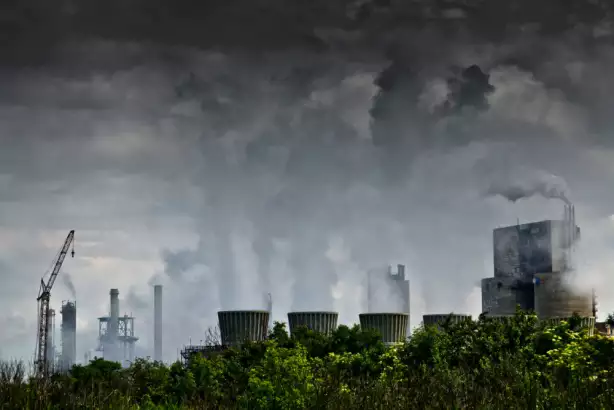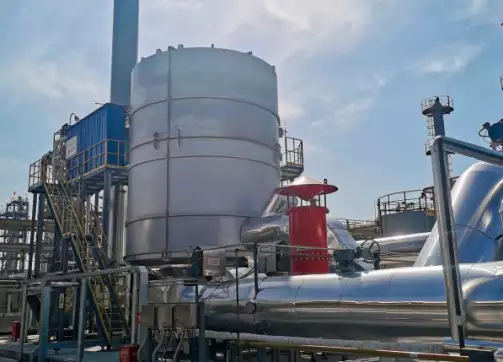RTO Air Pollution Control Thermal Efficiency
การแนะนำ
Regenerative Thermal Oxidizers (RTOs) have proven to be highly effective in controlling air pollution emissions. The thermal efficiency of RTOs plays a crucial role in their overall performance. In this blog post, we will explore various aspects and angles related to RTO air pollution control thermal efficiency, diving deep into the subject matter to gain a comprehensive understanding.
Understanding RTOs
- Definition of RTOs
- RTO Working Principle
- Components of RTOs
RTOs are pollution control systems widely used in industrial settings to minimize harmful emissions. These systems utilize high temperatures to oxidize volatile organic compounds (VOCs) and hazardous air pollutants (HAPs) present in exhaust streams.
The fundamental principle behind RTOs is the utilization of heat recovery. The exhaust gases are directed through ceramic beds, where they release heat and transfer it to the incoming process stream. This heat exchange process significantly improves the thermal efficiency of RTOs.
RTOs consist of essential components such as combustion chambers, ceramic heat exchangers, inlet and outlet valves, and control systems. Each component contributes to the overall thermal efficiency and effectiveness of the system.
Factors Affecting Thermal Efficiency
- Heat Recovery Efficiency
- Airflow Management
- Insulation and Heat Loss
- Combustion Efficiency
The efficiency of heat recovery is a critical factor in determining the thermal efficiency of RTOs. High-quality ceramic heat exchangers and proper insulation help maximize heat recovery, ensuring optimal performance.
Effective control of airflow within the RTO system is essential for achieving high thermal efficiency. Proper balancing of inlet and outlet valves, as well as accurate monitoring of pressure differentials, ensures optimal airflow distribution.
Adequate insulation is crucial in minimizing heat loss and maximizing thermal efficiency. Insulating materials with low thermal conductivity should be used to reduce energy wastage and maintain high temperatures within the RTO system.
Efficient combustion of VOCs and HAPs is vital for achieving high thermal efficiency. Proper burner design, fuel-air ratio optimization, and regular maintenance contribute to improved combustion efficiency.
Benefits of High Thermal Efficiency
- Emission Reduction
- Energy Savings
- Process Optimization
RTOs with high thermal efficiency effectively reduce air pollution emissions, helping industries meet stringent environmental regulations and standards. This leads to a cleaner and healthier environment for both humans and ecosystems.
RTOs that operate with high thermal efficiency require less energy input for maintaining optimal temperatures. This results in significant energy savings, reducing operational costs for industries while also promoting sustainability.
The thermal efficiency of RTOs directly impacts process optimization. By effectively controlling air pollution emissions, RTOs allow industries to focus on their core processes and enhance productivity and profitability.
บทสรุป
In conclusion, the thermal efficiency of RTOs is a crucial factor in determining their effectiveness in controlling air pollution emissions. By understanding the various aspects and angles related to การควบคุมมลพิษทางอากาศของ RTO thermal efficiency, industries can make informed decisions and implement strategies to minimize their environmental footprint. Embracing high thermal efficiency not only improves air quality but also brings about multiple benefits such as emission reduction, energy savings, and process optimization.

References
– Regenerative Thermal Oxidizers. (n.d.). Retrieved from [https://regenerative-thermal-oxidizers.com](https://regenerative-thermal-oxidizers.com)

Introduction of our Company
Our company is a high-tech enterprise specializing in the comprehensive treatment of volatile organic compounds (VOCs) waste gas and carbon reduction and energy-saving technologies. We have four core technologies: thermal energy, combustion, sealing, and automatic control. Our company has the ability to simulate temperature fields, air flow fields, and has the ability to test the performance of ceramic heat storage materials, molecular sieve adsorption materials, and high-temperature incineration and oxidation of VOCs. We have an RTO technology research and development center and waste gas carbon reduction engineering technology center in Xi’an, and a 30,000 square meter production base in Yangling. Our core technology team is from the Aerospace Liquid Rocket Engine Research Institute, and our company has more than 360 employees, including over 60 R&D technical backbones, including three senior engineers, six senior engineers, and 47 thermodynamics doctors. Our core products are the rotary valve heat storage oxidation incinerator (RTO) and the molecular sieve adsorption and concentration rotary wheel. With our own environmental protection and thermal energy system engineering technology expertise, we can provide customers with comprehensive industrial waste gas treatment solutions and carbon reduction and energy-saving solutions for various working conditions.
Certifications, Patents, and Honors
Our company has obtained various certifications, such as knowledge management system certification, quality management system certification, environmental management system certification, construction industry enterprise qualification, high-tech enterprise, rotary valve heat storage oxidation furnace rotary valve patent, rotary wing heat storage incineration equipment patent, and disk-shaped molecular sieve rotary wheel patent, etc.

How to Choose Suitable RTO Equipment
- Determine the characteristics of the waste gas
- Understand local regulations and emission standards
- Evaluate energy efficiency
- Consider operation and maintenance
- Budget and cost analysis
- Choose the appropriate RTO type
- Consider environmental and safety factors
- Performance testing and verification
It is important to consider each point in more detail to choose the most suitable RTO equipment for your needs.

กระบวนการบริการควบคุมมลพิษทางอากาศของ RTO
- Initial consultation, on-site inspection, and needs analysis
- Solution design, simulation and review
- Custom production, quality control, and factory testing
- On-site installation, commissioning, and training services
- Regular maintenance, technical support, and spare parts supply
We provide a one-stop solution for RTO air pollution control and have a professional team to tailor RTO solutions for our customers’ needs.
ผู้แต่ง : มิยะ
